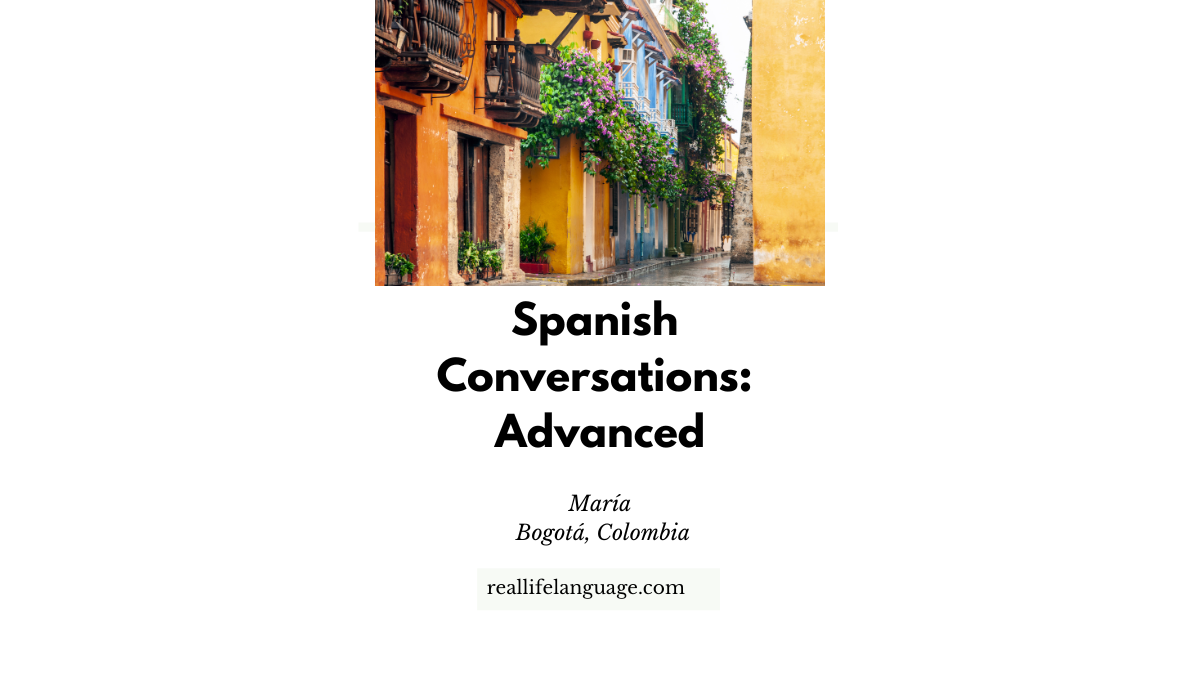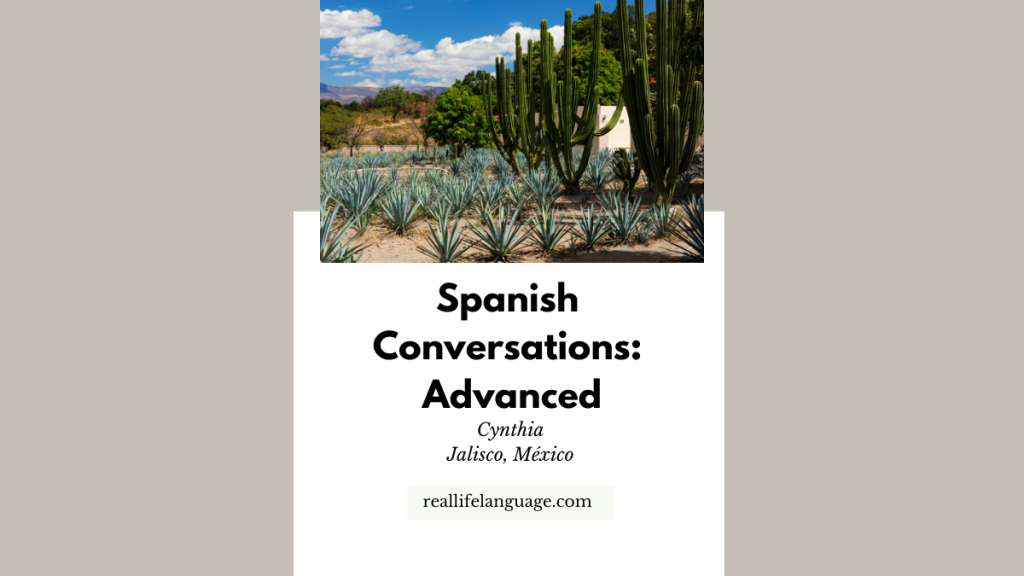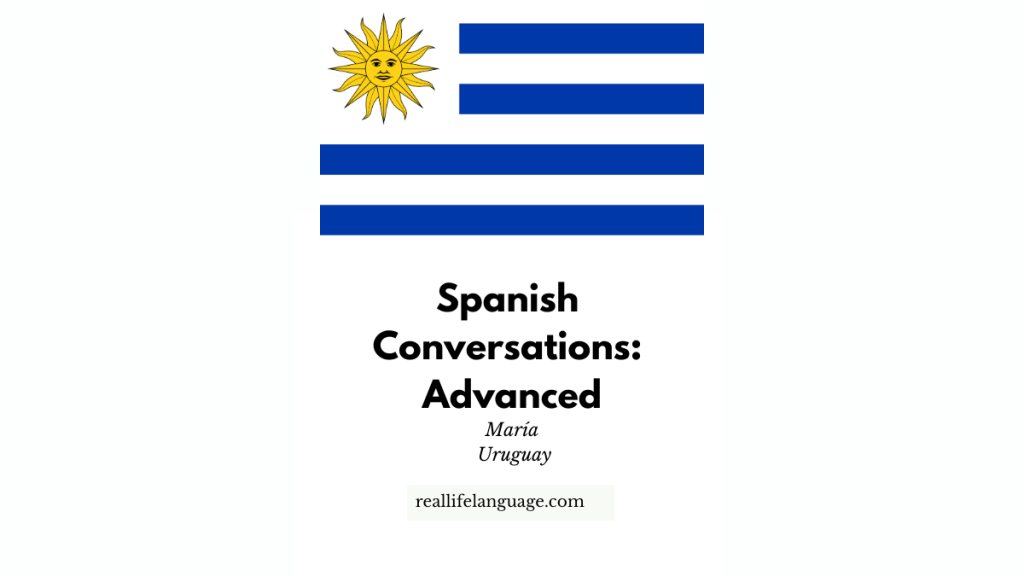
This article is based on a conversation in a Spanish-language video that explores life in Colombia through the eyes of María, who lives in Bogotá. It is designed to help readers learn advanced Spanish by combining cultural insights with practical vocabulary, phrases, and example sentences. Whether a learner wants to improve listening comprehension, cultural knowledge, or conversational fluency, this guide highlights the most useful language and ideas from the conversation.
Overview: What the Conversation Covers
The conversation moves through many everyday and cultural topics: Colombian music and literature, visual arts, biodiversity, technology and the digital divide, health and employment, the role of women, housing and the strata system, education, parties and food, global news, the pandemic, and family life. María speaks informally and honestly, offering both facts and personal anecdotes — perfect material for learners who want to hear real-world Spanish and then practice the vocabulary and expressions.
Culture and Arts: Music, Literature and Museums
María describes Colombia as a multicultural country with influences from European, indigenous and African roots. She highlights music genres such as la cumbia and la salsa, and mentions authors like Gabriel García Márquez and Jorge Isaacs (author of La María), a romantic novel set in the Cauca Valley.
Useful expressions:
- Somos un país multicultural. — We are a multicultural country.
- La salsa ha viajado por todo el mundo. — Salsa has traveled all over the world.
- Es una novela romántica. — It’s a romantic novel.
Nature and Biodiversity
Colombia has remarkable biodiversity: poisonous frogs, spectacled bears, macaws and the Andean condor. María uses vivid adjectives — única, exótica — which are useful for learners describing nature.
Sample sentence:
Tenemos una biodiversidad única con muchas especies que no existen en otro lugar. — We have a unique biodiversity with many species found nowhere else.
Technology and the Digital Divide
María highlights the advantages of technology (access to information, teaching opportunities, remote contact) and the disadvantages: uneven internet coverage and access in rural areas, which limit educational and economic opportunities.
Key vocabulary:
- Cobertura — coverage
- Banda ancha — broadband
- Brecha digital — digital divide
Health, Employment and Social Services
She points out both the existence of a national health system and its limitations: long waits for urgent appointments and treatment often concentrated in cities. On employment, María notes high unemployment rates (around 12%) and widespread informal work, while praising Colombians’ capacity to reinvent themselves — a repeated conversational theme.
Useful phrases:
- Sistema de salud — health system
- Empleo informal — informal employment
- Reinventarse — to reinvent oneself
Women, Society and Changing Attitudes
María describes strong, prepared women occupying important positions alongside lingering machismo that differs between generations. She also mentions growing inclusion of LGBTQ+ people in public life as contributing to social change.
Phrase to practice:
El machismo ha cambiado entre generaciones. — Machismo has changed between generations.
Housing and the “Strata” System
Housing is often apartment-based in cities. María explains Colombia’s socio-economic classification called estratos (1–6), used to compute utility subsidies: 1–3 are lower-income groups that receive subsidies; 4–6 pay more to help fund public services.
Example:
- Estrato uno — very low income
- Estrato seis — high income
Education
Education follows early childhood, primary (5 years), secondary (4 years) and higher education. Public education is free for lower-income students, but quality and coverage vary, making private education an attractive option for many.
Parties, Food and Leisure
María lovingly describes parties: big family meals, music, drinks (especially aguardiente and beer), and decorations for New Year. Typical dishes she recommends: ajiaco santafereño, arepa, tamales, arequipe and guava paste with cheese.
Try these sentences:
- Vamos a celebrar con comida típica. — We are going to celebrate with typical food.
- Prueba el ajiaco santafereño. — Try the ajiaco from Bogotá.
News, the Pandemic and Global Concerns
María expresses concern about the Russia–Ukraine conflict and about how the pandemic exposed global fragility. Her reflections give learners good examples of expressing opinion: No entiendo por qué…, Es aterrador, Hay que negociar.
Language Learning Tips and Practice
To learn advanced Spanish from conversations like this one, learners should:
- Listen for cultural references (music, food, festivals) and note vocabulary.
- Practice short, natural phrases from the conversation (opinions, descriptions, explanations).
- Repeat sentences aloud to train rhythm and intonation.
- Use vocabulary lists above to build themed flashcards (e.g., nature, housing, health).
- Shadow the speaker: listen and immediately repeat to improve fluency.
These techniques help learners who want to learn advanced Spanish by combining comprehension, vocabulary and cultural competence.
Conclusion
The conversation with María offers rich, natural Spanish about daily life, social issues and cultural pride. Learners who follow the vocabulary and practice suggestions can absorb both language and context: from la cumbia and el ajiaco to complex topics like the digital divide and health access. Use the phrases above, listen actively, and shadow the speaker to boost fluency and cultural understanding as you learn advanced Spanish.
100s of videos to learn Spanish:

